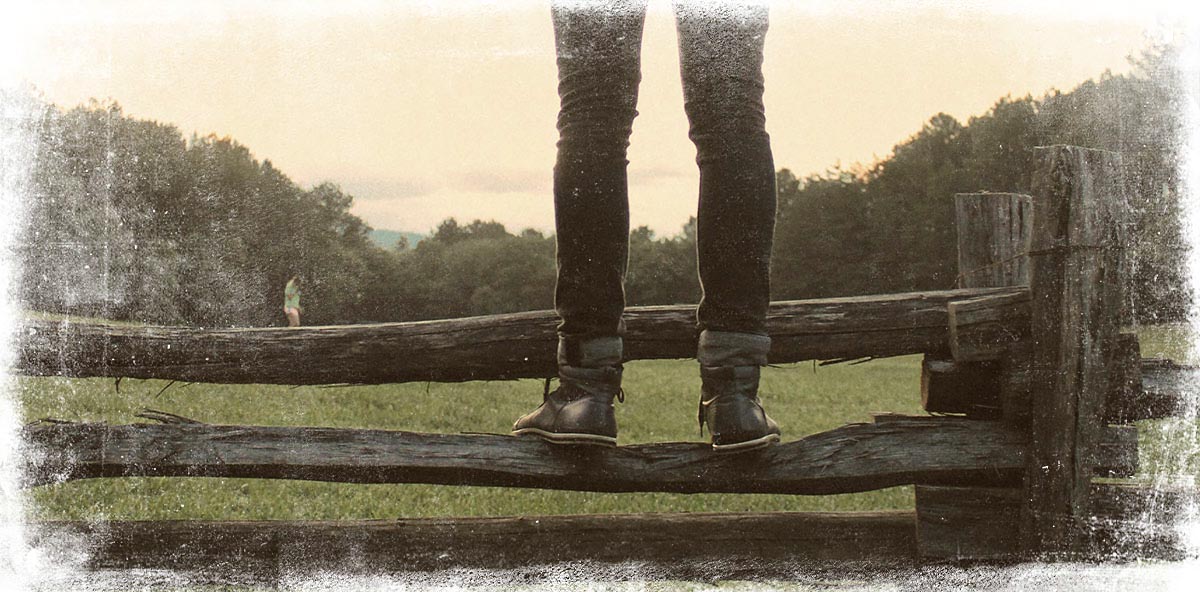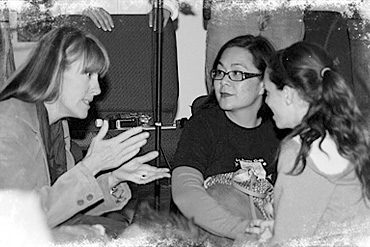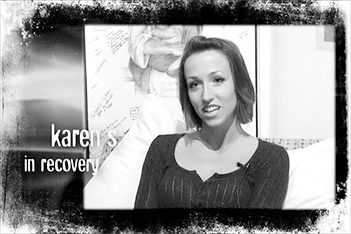
2025 Archives
Identity Shift
Dave Brisbin 5.25.25
If I asked you who you are, how would you answer?
Almost everyone I’ve asked, including myself, has answered with a mix of the roles they fill, the accomplishments they’ve accumulated, and the attributes they exhibit. Roles, accomplishments, and attributes describe the human container we inhabit in this life, the whole with which our egoic consciousness identifies. We think we are our roles, accomplishments, and attributes until we step out of our containers to find a deeper identity underneath. We’ve all stepped out at moments of peak experience, but we don’t shift identity that fast or easily.
We fear the loss of our container to death, illness, age, trauma as much as we identify with it. And we identify with it exclusively until we intentionally practice the experience of stepping out.
read more
The freedom of the truth Jesus offers is that who we really are can never be lost. Ever. Not even in death. Any identity imagined as separate from any other identity, from God’s identity, is illusion, so to strip the illusion is to see that we and the Father are one: true identity.
Jesus’ Way is relinquishing everything that can be relinquished until only that which can’t be relinquished remains. The point of any spiritual journey is to arrive at the ground of this irreducible presence, an identity that can’t be lost, but costs us everything to which we cling.
The Life in Death
Dave Brisbin 5.18.25
Two events converged in my mind last week.
My wife and I picked up the ashes of a friend we’d been helping take care of for the past few years…and our faith community turned eighteen years old. Nothing like an anniversary to open the memory faucet, and maybe because of our friend’s death, the serious illnesses of many others, and my own advancing age, my memories were not focused on timelines, but the long parade of people who have meant so much. Those who have stayed, moved on, and especially those who have passed on.
They have been reminding me of the brevity of life, to make my time count. Not morbidly in a pressured way, but gratefully, aware of the gifts they gave me in our short spans together. Each of four men who helped found and lead our community had a particular gift he exuded, lived out most likely unintentionally, and of which I was unaware at the time. It’s perversely true that it’s harder to see the gifts others are giving while they live. Maybe because while ongoing they’re taken for granted, or because always mixed with inevitable faults and annoyances, the prophet is not honored if too familiar.
We don’t know what we got til it’s gone.
read more
To live with presence, passion, humor, devotion is to immerse so fully in life, we step outside the container we will leave at death, realize that all our fear exists only in our minds. Not in life. Or in death. Fear is a mental construct that we can take off like a dirty shirt. We will always fear the unknown at first, but our teachers, living and dead, are showing us in their most unguarded moments, that we can loosen the bonds that hold us inside our fears and experience the life that exists even in death.
Restoring Mom
Dave Brisbin 5.11.25
Our English words patriarchal and paternal descend from the Latin word pater, father. We know about patriarchy—society organized around male domination, often to the point of excluding women—but paternalism is restricting the freedom and autonomy of others under the guise of protecting their own welfare. The US started out patriarchal but not paternal. We didn’t allow women to vote until 1920 but also didn’t collect income tax until 1913, generally leaving people to fend for themselves for better or worse. Today, we’re thankfully much less patriarchal, but much more paternal.
On Mother’s Day, this is something to consider, because the church also been shamefully patriarchal, reflecting the culture around it. But since scripture does appear to portray God as male, is God patriarchal and/or paternal? We may wish God to be more paternal, happy to give up freedom for better risk control…but patriarchal? Male?
read more
Jesus always led with mother first, breaking ritual and social barriers in order to establish compassionate relationship before he ever instructed paternally. Father may symbolize strength, but without Mother, there is no reason to be strong. Scripture shows us a necessary and complementary balance, but more essentially, that we will never know Father God until we first experience God as Mother. All of God.
Already Free
Dave Brisbin 5.4.25
The most damaging attitude toward life and spirituality is…wait for it…passivity.
Passive people feel their actions are insufficient or that they have no real choice at all, which makes them victims—defined by choicelessness. Victims are always waiting, never in the present, looking toward some other moment when circumstances may change or someone, God, saves them from their circumstances. People with victim mentalities are passive-aggressive in their interactions with others, finding indirect ways of meeting needs and expressing anger or frustration without ever directly confronting core issues.
As damaging all this is to human relationships, it’s catastrophic to spiritual ones. And yet, a passive, victim mentality is seductive, as comforting as a warm blanket, often nurtured for lifetimes. Having no choice also means no blame, no responsibility or need to act. Innocent of all charges. An innocent is not responsible either—kind of the flip side of a victim, and it’s comforting to imagine ourselves as innocent.
But we were not created to be innocent. Certainly not to stay innocent.
read more
It’s scary to be responsible. Overwhelming at times.
We all become victims when personal choice is removed, and as much as that hurts, the relief it can offer in ongoing passivity, the luxury of not having to choose or act, can bewitch us. If we’re waiting for God to save us, he’s not coming…because he is already here. All poured out. If we’re waiting, we’ll never see the truth. That we’re already free to choose what has already and always been freely given.
Between Freedoms
Dave Brisbin 4.27.25
We’re back in count again.
We just finished counting forty days of Lent, and now we’re counting again. The count of Lent signifies a time of preparation for Easter, and the count now is also preparation for a second liberation on the fiftieth day after Easter—Pentecost.
Our liturgical calendar is overlaid on that of the Jews, who for 3,500 years have counted seven weeks of seven, forty-nine days plus one, from the second day of Pesach/Passover to Shavu’ot/Weeks. Originally a festival marking the barley harvest, Passover became linked with Exodus, the physical liberation of the people. Shavu’ot, at the wheat harvest, was linked with the giving of the Law on Sinai, the spiritual liberation of the people and the beginning of a deeper relationship with God.
read more
The shape of their journey is ours as well. If we answered the call to seek something greater than ourselves, joined new communities, accepted new beliefs and traditions, we’ve had our physical Exodus, liberation from the illusion of separation. But this is just the beginning. We remain in count. Calvary, the loss that begins the wilderness of stripping off all to which we cling, is the fulcrum between our two liberations.
The way to Pentecost begins at Calvary and is traveled living as if God and God’s promises are more alive than life itself.
Meaning of Resurrection
Dave Brisbin 4.20.25
Cross and resurrection form the crux of Christian tradition, but whatever these events were historically, if we merely revere them from a distance of two millennia, we are missing the point of the gospels. These events realigned every detail of the lives of Jesus’ closest friends and followers, but as long as they remain historical events and theological concepts, they won’t realign ours. If the resurrection is to have the power now that it had then, we need to know where to look for meaning.
We naturally focus on the supernatural event, fighting and debating, but have you noticed that the gospels don’t show us the event at all? Makes us crazy looking for literal details, for certainty, but in the gospels, the resurrection happens offstage, in the blink of a hard cut. The story picks up afterward, following those Jesus left behind and their all-too-natural, human reactions. The gospels show us exactly where to look for meaning—not in the miracle itself, but in how the miracle affects our lives.
The question isn’t whether you believe…it’s what difference it makes that you believe.
read more
Whatever the resurrection literally was two thousand years ago, if we don’t re-experience intimacy with Jesus now, in prayer and every face and embrace, every detail of our lives, we may say we believe, but re-animation, rebirth, will elude. The meaning of resurrection, like kingdom, is not out there somewhere to be observed, but within us to be tasted and seen as life that is always new and always alive.
Threat of Clarity
Dave Brisbin 4.13.25
Very few of us live in the real world.
Like avatars in a gamescape, we live in a world created by our own thought patterns, which are in turn created by our core beliefs—deeply held, fundamental assumptions about ourselves, others, and the world. Hiding in our unconscious, core beliefs are as unquestioned as the air we breathe, acting as filters through which everything in life is perceived, without our knowing they even exist.
Initial reactions to earliest experiences, core beliefs remain in place, shaping not just how we interpret life, but how we behave. When positive, core beliefs can be advantageous, but when negative, they stoke fears that create dysfunctional behavior that creates consequences that reinforce the core beliefs themselves—I am unlovable, worthless; people can’t be trusted, will always let me down; the world is dangerous, I will never be happy—self-fulfilling prophecies in an endless feedback loop.
read more
Jesus riding into Jerusalem is an object lesson in only seeing what we are programmed to see. Four distinct groups all see Jesus filtered through the desires and attachments of their core beliefs. The Jewish people and Jesus’ followers see him as a savior coming to fix their problems. To the Jewish and Roman authorities, he’s a threat to their powerbases. Whether Jesus is savior or threat depends on our core beliefs.
We say Jesus is savior, but he’s not here to fix our problems. That’s our job. He’s here to clear our eyes. That’s how he saves. Our way of seeing, our core beliefs, are our powerbases.
Until we let Jesus threaten our powerbases, he will never be our savior.
Doing Our Forty
Dave Brisbin 4.6.25
Just when you think the world can’t get any crazier, each week we get a whole new view of crazy. And the more the world pounds on our door through news and social media, the more our grip on spiritual reality can loosen. The silence and solitude of contemplative practice, the wordless knowing of God’s presence can feel impotent, incapable of meeting the screaming needs of life’s issues.
The world always has its thumb on the scale, so we naturally tilt that way, but a fulfilled life is all about balance. We need both contemplation and action. Focusing on interior spirituality, we can become complacent, blind to the needs and suffering around us. Focusing on exterior activism, even if we call our drives spiritual, we can become identified with the dysfunction we oppose—angry, biased, even corrupt. But while working to keep weight on both sides of the scale, we can’t forget that our spirituality is still the foundation of any action we could possibly call loving.
read more
When out of overwhelming devotion, Mary of Bethany anoints Jesus with a pound of expensive ointment, Judas Iscariot derides her for wasting money that could have gone to the poor. Interior and exterior on display. Jesus provides the balance, rebukes Judas saying, “you will always have the poor with you, but you will not always have me.” The choices we make to act, whether micro or macro, are only as loving as the interior preparation that births and fuels them.
The interior work that Jesus did in the wilderness, the symbolic forty days of facing the wild beasts of his human compulsions, built his foundation of identity with God and informed his choices for the rest of his life.
He did his forty. And we must do ours.
Burning Bushes
Dave Brisbin 3.30.25
Burning bush is our cultural meme, idiom for a peak experience, a vision of God or from God. But for all its power, one burning bush is not enough. Standing on holy ground in front of the original burning bush, Moses argued with God, doubted God’s word right there, and for the rest of his life, oscillated between boldness and doubt. Just like any human. But how in the world is a burning bush not enough for permanent transformation? How could that not change us without a doubt?
A burning bush, a moment when ultimate reality breaks through the veil between heaven and earth, is a glimpse of life through God’s eyes—everything connected, everything literally one substance. The human view of individual form and function falls away. Seventeen years into his monastic experience, trying to find holiness through cloistered separation from secular life, Thomas Merton had an experience in downtown Louisville at the corner of 4th and Walnut. In the middle of the busy shopping district, he was “suddenly overwhelmed with the realization that he loved all those people…that the whole illusion of a separate holy existence is a dream…”
read more
We need burning bushes as ballast for our sacred tension, but they are rare, come unbidden. We can’t create them or control them, but we can become increasingly aware when they are happening while working to create the perfect environment in our hearts for them to occur. Ride the sacred tension, living each day as the possibility of another surprise, another burning bush moment of seeing life through God’s eyes. Always new, alive, one.
Showing Our Work
Dave Brisbin 3.23.25
Remember taking math tests in school? Remember how you had to show your work? Remember how you hated that? Wasn’t enough to get the answer, you had to show how you got to the answer. Yes, a right answer, or at least a functional one, is important. But showing your work signaled that you grasped underlying principles that would give you repeatable results, a platform on which to build.
Mathematics understands that the how is at least as important as the what. That any answer is only valid within the context of the process of the solution. How we do what we do defines us and our work.
In scripture, this process is symbolized by the number forty—a time of trial and testing leading to spiritual rebirth, the necessary work of transformation that just takes time. After Jesus’ baptism, he sees the spirit of God and hears God’s voice. A divine download if there ever was one. Yet he is immediately impelled into the wilderness for forty days to face his wild beasts. After the Damascus road vision, Paul spends fourteen years in Arabia for his forty. Elijah after Mount Carmel, the Israelites after the Red Sea crossing, Jacob after the dream of his ladder, the disciples after the resurrection…all faced fortyness after their downloads. But why? Shouldn’t a direct download from God be enough?
read more
However intense, any download is only momentary. Will not last unless we wrestle with the paradox long enough to assimilate, push into muscle memory a single view of two ever-oscillating realities: heaven and earth. There is no other way.
We have to show our work.



